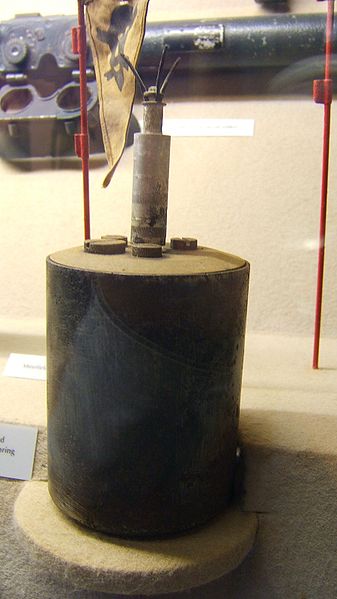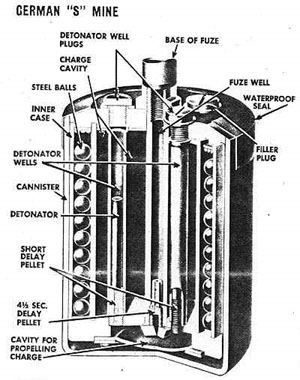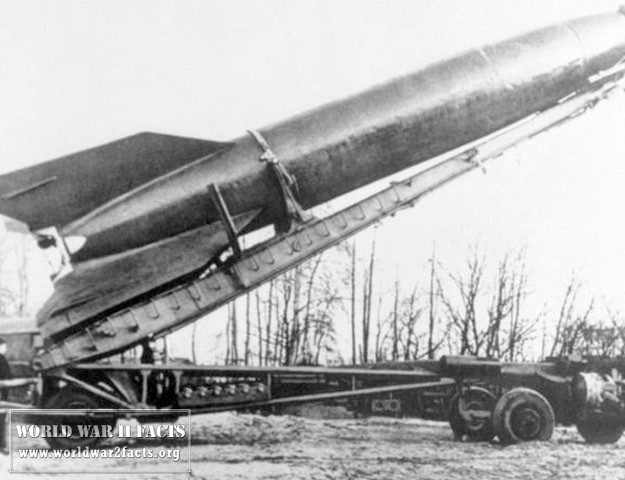S Mine Facts (Bouncing Betty)

The S mine (also known as Bouncing Betty or the Splittermine in German) was one of the most lethal versions of German mines in World War II. When the mine was activated, it would launch into the air and detonate approximately three feet in the air (just shy of three feet at 2 feet and 11 inches). When the mine detonated, it would spray shrapnel in a 360-degree direction and was designed to take out unprotected infantry and military personnel.
When was the S Mine Created?
Contents
The S mine was first produced in 1935 and was a critical component of the German defensive strategy of the Third Reich. For the ten years the mine was manufactured, more than 1.93 million devices were created. Over the production run, the two mine variants produced were the SMi-35 and the SMi-44, with each model having minor differences. During WW2, the S mine was responsible for slowing and repelling invasions into German territory and helped inflict large numbers of casualties on Allied forces. Due to the success of the S-mine, many other countries would imitate the design throughout the war.

S Mine General Information
- Type: Bounding anti-personnel mine
- Place of origin: Germany
Service history:
- In service from: 1935–1945 and used by: Germany, Axis Powers, Finland
- Wars of Service: World War II, Winter War, Continuation War
S Mine Production History
- Years Produced: 1935–1945
- Number of S Mines Built: 1,930,000+
- S-Mine Variants: SMi-35, SMi-44
S Mine Specifications
- Weight: 4.1 kilograms (9.0 lb)
- Height: 127 mm (5.0 in)
- Diameter: 102 mm
- Mine Filling: TNT
- Filling weight: 182 grams (6.4 oz)
Detonation Mechanism
- S.Mi.Z 35 (pressure),
- Z.Z.35 (pull),
- Z.U.Z.Z. (tension release),
- E.S.Mi.Z (pressure and electric)
History of the S-Mine
The S-mine was first encountered during combat between September 7-11, 1939, during the Saar Offensive. The mine deployment resulted in the French army suffering numerous casualties and the French withdrawing. Based on the performance of the mine during this timeframe, German leadership decided to further deploy the device in defense of the country and other occupied territories.
Throughout WW2, the German army continued to expand the deployment of the S-mine to help take the place of infantry forces. In defense of the pending Allied invasion of Italy, the German Tenth Army deployed more than 23,000 S-mines. Later in the war, the Germans deployed a large number of S-mines on the Normandy beaches. Just off of Utah Beach on Îles-St.-Marcouf, Rommel ordered millions of S-type and other mines deployed, forming what the Germans called the “Atlantic Wall.” Throughout WW2, the Germans established the tactic of using S-mines and anti-tank varieties to help withstand the advances of Allied tanks and infantry.
After World War 2, production of the S-mine did not continue by either East or West Germany. Although not officially documented, the destruction of the remaining stockpiles of the S-mines is believed to have occurred by the Allied Powers following the war, except for keeping a number of the mines for exploitation and reverse engineering.

During this same post-war timeframe, the British Ministry of Defence, the French government, and the American Army Corps of Engineers deployed a
a large number of personnel to undertake the task of de-mining Western Europe. More than 49,000 German POWs were used in France to augment French personnel to complete this task. The German military policy guided the efforts of accurately recording the location of all mines and minefields.
Despite these efforts, occasional incidents still occur in France, Germany, former Warsaw Pact countries, and North Africa today. Eastern Europe and North Africa still have extensive WW2-era minefields that have never been cleared or verified to be cleared due to incomplete records of the minefield placement. To date, a large portion of farmland is still not usable in Libra (up to 27%) due to minefields put in place during the war. Although the S-mine was rated to only have an effective lifespan of two to seven years by the Germans, the explosives contained within the mine have still been found to be active more than 70 years after being placed in the field.
S Mine Characteristics
The S-mine comprised a steel cylinder less than 6 inches in height and just under four inches in diameter. A steel rod stuck out from the top of the mine, which held the primary fuse of the device and the sensor or trigger of the mine. The SMi-44 had an offset fuse, while the SMi-35 had a central fuse, with the entire mine weighing approximately 8.8 lbs. The final weight of the mine would ultimately depend on what variant of TNT was used in the device (either the heavier poured TNT or, the lighter powdered TNT). The propelling charge used in the mine was black powder, and the pressure sensor used a percussion cap to ignite the mine.
The Germans designed the primary fuse to delay the firing of the propelling charge for approximately four seconds after the S mine was initially triggered. The propelling charge would send the mine into the air and activate three short delay pellets between the propellant charge and three detonators in the mine. The short delay pellets would allow the mine to reach the designed height before it exploded, giving it its nickname, Bouncing Betty. The pressure sensor only took 15 pounds or heavier weight to set the mine off. This helped ensure wildlife would not activate the mine; however, it would generally activate when set off by people.
How Does the Bouncing Betty (S Mine) Work?

A three-pronged pressure fuse would trigger the S mine when a person stepped onto the mine. The Germans could modify the mine to be triggered by a tripwire by using a special adapter. To accept any standard German trigger or ignition, the steel tube on the mine which held the fuse was threaded. This also allowed the sensor to be removed and the mine manually set off or triggered by a human.
Once the Bouncing Betty was set off, the mine would be fired up between 2ft 11 inches and 4ft 11 inches in the air using a propellant charge. Less than a second later, the main charge of the S mine would detonate and severely injure or kill anyone in the immediate area of the mine. Surrounding the mine was approximately 360 steel balls, scrap metal pieces, or short steel rods. These pieces would be propelled at high velocity out from the mine. The average time between the triggering of the mine and the propelling charge being set off was 3.9 and 4.5 seconds. This time would vary based on the condition and age of the mine. The rated lethality range of the mien was 66 feet (20 meters), which could inflict casualties out to 330 feet (100 meters).
Surviving the S Mine Detonation in World War 2
Unfortunately, due to lousy propaganda in the United States during WW2, a myth spread that if a soldier stepped onto an S mine, it would not go off until stepping off the trigger. This was incorrect, as the mine trigger did not wait for the pressure to be released before activating the device. It would prove equally deadly if one chose to run or stand still after starting the mine. After analyzing the mine, it was determined that the best way to survive the detonation was to drop to the ground and lie day with one’s face to the dirt as quickly as possible. This would not necessarily guarantee the mine would not harm you but would minimize the amount of shrapnel the body would get hit with from the mine.
How was the S Mine Detected and Disarmed?
Since the German S mine was made up of mainly metal components, it was susceptible to being detected by metal detectors in the field. Few of these devices were deployed to Allied infantry units; however, the alternative method was to probe with a bayonet or knife at a low angle in the ground. The probing action had to be accomplished at an angle, or the action would set off the pressure sensor of the mine.
Once discovered, the soldier would place a pin into the safety pinhole of the device to prevent it from being set off. The soldier could use the wire if an electrical trigger or tripwire were affixed to the mine. Sometimes the Germans would affix additional booby traps to the tripwire, so experienced personnel would usually neutralize this setup for the S mine. To completely neutralize the mine (without detonating it), three plugs on the top could be removed to access and remote the three detonators of the device.
S Mine References
- Alex Kershaw. The longest winter: the Battle of the Bulge and the epic story of WWII’s Most Decorated Platoon. Cambridge, Ma. Da Capo Press 2004, ISBN 0-306-81304-1, pp. 21, 47.
- Cornelius Ryan. The Longest Day. New York: Simon and Schuster, 1994, ISBN 0-671-89091-3, p. 162–163.
- US War Department Technical Manual TM-E 30-451: Handbook on German Military Forces, 1945 (Ch. VIII, Sec. V.5.a-b), Last Viewed: 13 December 2013.
- Finland Land Mines Part 2, JaegarPlatoon.net, Last Viewed: 13 December 2013.
- SMi-35 Mine, World War 2 Wikia, Last Viewed: 13 December 2013.




